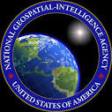New NGA global map advances R&D in geophysics and nonproliferation
 A team of researchers led by scientists at the National Geospatial-Intelligence Agency published a new map September 1 that characterizes the Earth’s radioactivity and offers new and potential future applications for basic science research and nonproliferation efforts.
A team of researchers led by scientists at the National Geospatial-Intelligence Agency published a new map September 1 that characterizes the Earth’s radioactivity and offers new and potential future applications for basic science research and nonproliferation efforts.
The Antineutrino Global Map 2015, or AGM2015, is an unprecedented experimentally-informed model of the Earth’s natural and manmade antineutrino flux.
The map uses open-source geophysical data sets and publicly available international antineutrino detection observational data to depict varying levels of radioactivity on Earth.
“The open access availability of these antineutrino maps represents the next generation of cartography and gives important insights into the basic understanding about the interior of our planet,” said Shawn Usman, NGA R&D scientist and lead author of the study.
The neutrino and its antimatter cousin, the antineutrino, are subatomic particles produced by stars of all types, including the Sun, as well as Earth’s atmosphere, supernovae, nuclear reactors, and radioactive materials.
The research team is comprised of neutrino physicists and geophysicists from the National Geospatial-Intelligence Agency, the University of Hawaii, Hawaii Pacific University, the University of Maryland and Virginia-based Ultralytics, LLC.
Antineutrinos were first detected as emissions from nuclear reactors in the mid-1950s two decades after their existence was proposed. More than 99 percent of all terrestrial antineutrinos come from within the Earth, with the remainder coming from nuclear reactors. The detection of antineutrinos from nuclear reactors continues to provide insights into their oscillatory behavior and potential future applications for nuclear nonproliferation.
Naturally occurring radioisotopes in the Earth produce geophysical antineutrinos, or geo-neutrinos, and reveal information about the planet’s interior. The study of geo-neutrinos, needed to support nuclear reactor detection, is a gateway to meaningful geologic research into the Earth’s heat sources and geodynamics.
“Geo-neutrino measurements are essential in characterizing the Earth’s radiogenic power across geologic time and in improving our understanding of planetary formation processes in the early solar nebula.” Usman said. “Our vision at NGA is to ‘Know the Earth…Show the Way…Understand the World.’ This map enhances our fundamental understanding of the planet by mapping out Earth’s natural and anthropogenic radioactivity.”
The authors expect to release periodic updates to the original AGM2015 as future oscillation measurements, crust/mantle model advancements and ongoing construction and decommissioning of nuclear reactors will eventually change the map. In addition to antineutrino mapping NGA is also investigating the development of global neutron/gamma maps to further characterize the Earth’s natural radioactivity.
AGM2015 is a product of NGA’s antineutrino research program. NGA scientists previously published proposed methods to exploit the flavor oscillation phenomena in a process called NeUtrino Direction and Ranging, or NUDAR. NGA has also developed a small prototype antineutrino detector being tested at the National Institute of Standards and Technology in Gaithersburg, Maryland.
The map and accompanying research paper are published in Nature’s Scientific Reports.
Source: NGA







